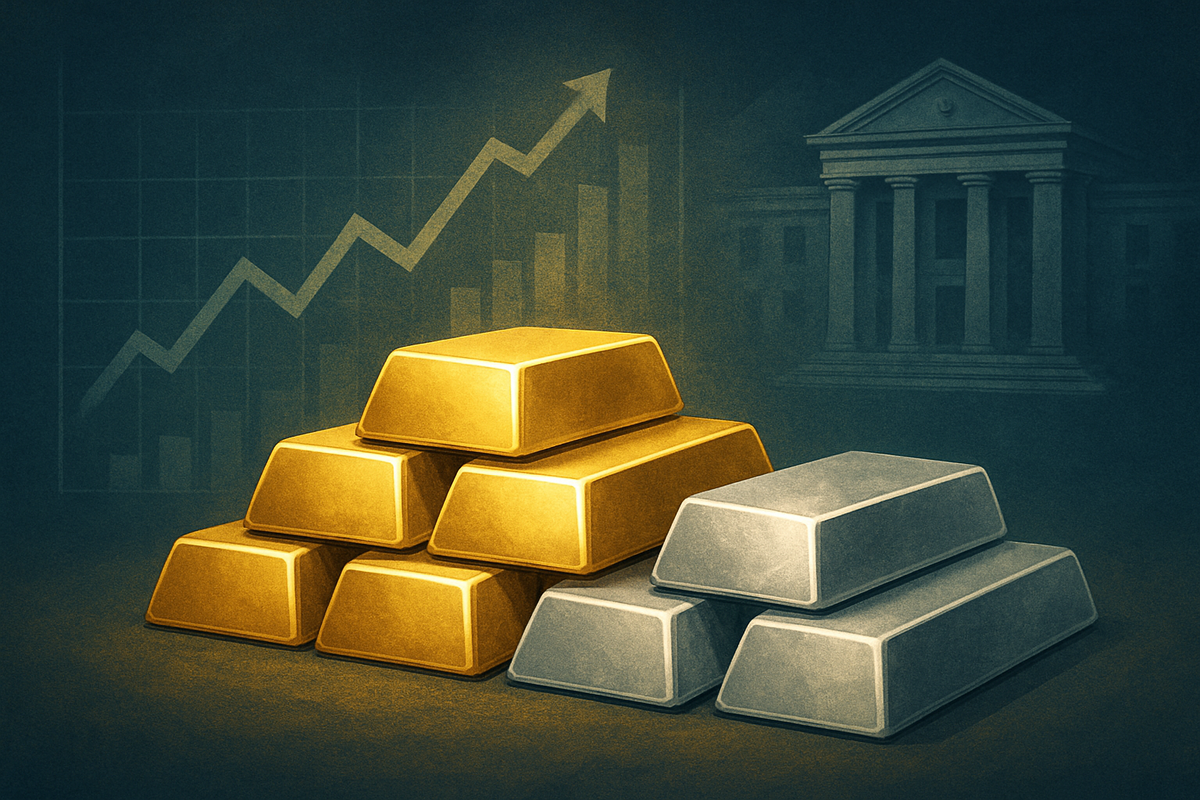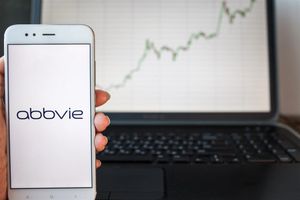
The precious metals market is currently experiencing a dynamic surge, with both gold and silver reaching unprecedented highs as of November 1, 2025. This robust rally is not merely a fleeting trend but a complex interplay of the Federal Reserve's evolving monetary policy, persistent inflationary pressures, and a heightened global demand for safe-haven assets. As the Fed navigates a delicate balance between supporting a softening labor market and taming inflation, its recent interest rate cuts have set the stage for a compelling narrative in the world of commodities, signaling a potential fork in the road for the economy and the value of tangible assets.
This period marks a pivotal moment for silver, which is not only benefiting from its traditional role as a monetary metal but also from its increasing industrial demand in the burgeoning green energy sector. Gold, on the other hand, continues to solidify its position as the ultimate store of wealth and an indispensable hedge against economic uncertainty and currency debasement. Investors are keenly watching how these market dynamics unfold, particularly as the Fed's future actions remain a subject of intense speculation, capable of either fueling further gains or introducing new headwinds for these lustrous metals.
The Fed's Pivot and Precious Metals' Ascent
The current bullish momentum in the gold and silver markets can be directly attributed to a significant pivot in the Federal Reserve's monetary policy throughout 2025. After a period of aggressive rate hikes, the Fed initiated a series of rate cuts, signaling a shift towards easing conditions. Specifically, the central bank reduced its benchmark interest rate by 25 basis points in September 2025, bringing the federal funds rate to a range of 4.0-4.25%. This was swiftly followed by another 25 basis point cut in October 2025, lowering the rate further to between 3.75% and 4.0%. These actions were largely driven by a weakening labor market, even as inflation continued to hover above the Fed's long-term target.
This easing cycle has had a profound impact on non-yielding assets like gold and silver. Lower interest rates decrease the opportunity cost of holding these metals compared to interest-bearing alternatives such as bonds, thereby increasing their attractiveness to investors. The market's reaction has been swift and decisive: gold (COMEX: GC=F) surged to an all-time high of $4,381.58 per ounce in October 2025, while silver (COMEX: SI=F) similarly hit a record peak of $54.3775 per ounce in the same month. These impressive figures represent year-to-date gains of approximately 50-55% for gold and an even more dramatic 61-64% for silver.
Beyond interest rates, persistent inflationary pressures have also been a critical catalyst. The U.S. annual inflation rate rose to 3% in September 2025, remaining stubbornly above the Fed's 2% target. This sustained inflation has reinforced the role of gold and silver as traditional hedges against currency debasement and purchasing power erosion. Furthermore, a broader trend of "de-dollarization" among central banks, coupled with significant geopolitical uncertainties and economic instability, has fueled strong safe-haven demand. Central banks globally have been net buyers of gold, with 23 nations reportedly adding to their reserves in the first half of 2025, indicating a coordinated strategic shift away from over-reliance on the U.S. dollar. This institutional buying provides a robust floor for gold prices and underscores the metal's enduring appeal as a foundational reserve asset.
Companies Poised to Win or Lose in the Precious Metals Rally
The current boom in gold and silver prices presents a compelling landscape for public companies operating within the mining, refining, and investment sectors. Mining companies, in particular, stand to benefit significantly from elevated commodity prices, as their profit margins expand with every dollar increase in the value of the metals they extract.
Major gold miners such as Newmont Corporation (NYSE: NEM) and Barrick Gold Corporation (NYSE: GOLD) are prime examples of companies that could see substantial boosts to their revenues and earnings. Higher gold prices directly translate into increased top-line growth, and given their established production capabilities and extensive reserves, these giants are well-positioned to capitalize. Similarly, silver-focused producers like Pan American Silver Corp. (TSX: PAAS) and Fresnillo Plc (LSE: FRES) are experiencing a "silver moment." With silver's dual role as both a monetary metal and an industrial commodity (especially in solar panels and electric vehicles), these companies benefit from both investment demand and growing industrial applications. Their profitability is directly tied to the price of silver, making them significant beneficiaries of the current market dynamics.
Conversely, companies that have heavily hedged their production at lower prices, or those with high operational costs and significant debt, might not fully capture the upside of this rally. While higher prices generally benefit the sector, inefficient operations or unfavorable hedging strategies could limit their gains compared to more agile competitors. Furthermore, companies whose business models rely heavily on a stable, low-inflation environment, or those with significant exposure to interest-rate-sensitive consumer spending, could face headwinds. For instance, some financial institutions or consumer discretionary companies might see reduced consumer purchasing power or higher borrowing costs if the Fed's actions fail to tame inflation effectively, indirectly impacting their performance relative to the booming precious metals sector.
Investors holding Exchange Traded Funds (ETFs) like the SPDR Gold Shares (NYSE Arca: GLD) and the iShares Silver Trust (NYSE Arca: SLV) are also direct beneficiaries, as these instruments track the price movements of their respective metals. The increased investor interest in precious metals as a hedge against inflation and economic uncertainty is driving capital inflows into these funds, further supporting their asset bases and market valuations. This positive feedback loop reinforces the attractiveness of precious metals as a portfolio diversifier in the current economic climate.
Wider Significance and Historical Context
The current surge in gold and silver prices, driven by the Federal Reserve's policy shifts and persistent inflation, fits squarely into broader industry trends emphasizing tangible assets and diversification. This event underscores a growing global distrust in fiat currencies and traditional financial instruments, particularly in an environment of unprecedented government spending and accumulating national debts. The "de-dollarization" trend, where central banks and nations actively seek to reduce their reliance on the U.S. dollar, is a testament to this shift, positioning gold as a primary alternative reserve asset.
The ripple effects of this precious metals rally extend beyond mining companies to various sectors. For example, the increased demand for silver in green energy technologies—solar panels, electric vehicles, and 5G infrastructure—highlights its critical role in the global transition to sustainable energy. This industrial demand adds a layer of resilience to silver's price, distinguishing it from purely monetary assets. Competitors in the broader commodities market, such as industrial metals, might see some capital diverted towards gold and silver, although strong industrial demand for other metals could mitigate this. Partners in the supply chain, from exploration companies to refiners and distributors, are likely to experience increased activity and profitability.
Regulatory and policy implications are also significant. Should inflation persist or accelerate despite the Fed's rate cuts, there could be increased political pressure on central banks to take more aggressive measures, potentially leading to further market volatility. Conversely, if the Fed successfully engineers a "soft landing," the allure of precious metals as safe havens might diminish slightly, though their role as inflation hedges would remain. Historically, periods of monetary easing combined with elevated inflation have almost invariably led to strong performance in gold and silver. For instance, the 1970s saw both metals surge dramatically amidst high inflation and economic uncertainty, and more recently, the post-2008 financial crisis era also demonstrated their safe-haven appeal during quantitative easing. These historical precedents lend credence to the current rally, suggesting that the underlying economic conditions are highly conducive to sustained strength in precious metals.
What Comes Next: Navigating the Crossroads
Looking ahead, the trajectory of silver and gold prices will largely hinge on the Federal Reserve's future policy decisions and the evolution of global economic conditions. In the short term, the market will be closely watching for any further indications from the Fed regarding interest rates. While recent cuts have been bullish, the Fed has also indicated that further easing is "not a foregone conclusion" for December 2025, suggesting a cautious approach due to ongoing inflation concerns and a lack of complete economic data. Any hawkish signals, such as a pause in rate cuts or an unexpected hike, could introduce short-term volatility and temper the upward momentum.
In the long term, several possibilities emerge. If inflation remains elevated or even accelerates, gold and silver are likely to continue their ascent, solidifying their roles as essential inflation hedges. The "de-dollarization" trend, coupled with sustained central bank demand, could also provide a robust floor for gold prices, irrespective of short-term interest rate fluctuations. Furthermore, the increasing industrial demand for silver, particularly from the green energy sector, positions it for continued structural growth, making it less susceptible to purely monetary policy shifts.
Potential strategic pivots for investors and companies include diversifying portfolios to include a higher allocation to precious metals, or for mining companies, focusing on expanding production and optimizing costs to maximize profitability in a high-price environment. Market opportunities may emerge in exploration and development of new precious metal deposits, as higher prices make previously uneconomical projects viable. Challenges could include increased regulatory scrutiny on mining practices or potential supply chain disruptions impacting production.
Possible scenarios range from a continued "goldilocks" environment for precious metals—where inflation persists, interest rates remain supportive, and global uncertainty drives safe-haven demand—to a scenario where central banks successfully tame inflation, leading to a moderation in precious metals' appeal. Another scenario involves escalating geopolitical tensions, which would undoubtedly amplify safe-haven flows into gold and silver, potentially pushing prices even higher.
A Resilient Future for Precious Metals
In summary, the current market dynamics for silver and gold are characterized by a powerful confluence of factors: the Federal Reserve's pivot to interest rate cuts, persistent inflationary pressures, and robust safe-haven demand fueled by global uncertainties and central bank diversification. As of November 1, 2025, both metals have demonstrated remarkable resilience and significant gains, with gold hitting over $4,380 per ounce and silver surpassing $54 per ounce, reflecting their enduring value proposition in a turbulent economic landscape.
Moving forward, the market will continue to be highly sensitive to the Fed's next moves. While further rate cuts could provide additional tailwinds, any signs of a hawkish shift or a successful taming of inflation could introduce headwinds. Nevertheless, the underlying structural drivers—namely, the role of precious metals as inflation hedges, their safe-haven status, and for silver, its growing industrial demand—suggest a resilient future. The de-dollarization trend and sustained central bank accumulation of gold further bolster this outlook, indicating that institutional players are increasingly viewing gold as a fundamental component of global reserves.
Investors should closely watch key economic indicators such as inflation rates, employment figures, and the Fed's official statements for clues on future policy direction. Geopolitical developments and the pace of green energy adoption will also be crucial factors influencing precious metal prices. The current environment underscores the importance of precious metals as a strategic asset class, offering both protection against economic volatility and potential for significant capital appreciation in the months and years to come.
This content is intended for informational purposes only and is not financial advice





